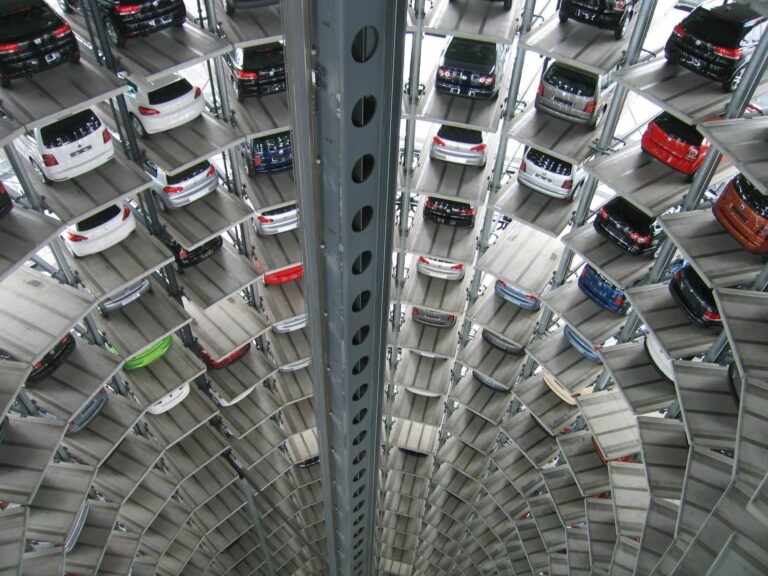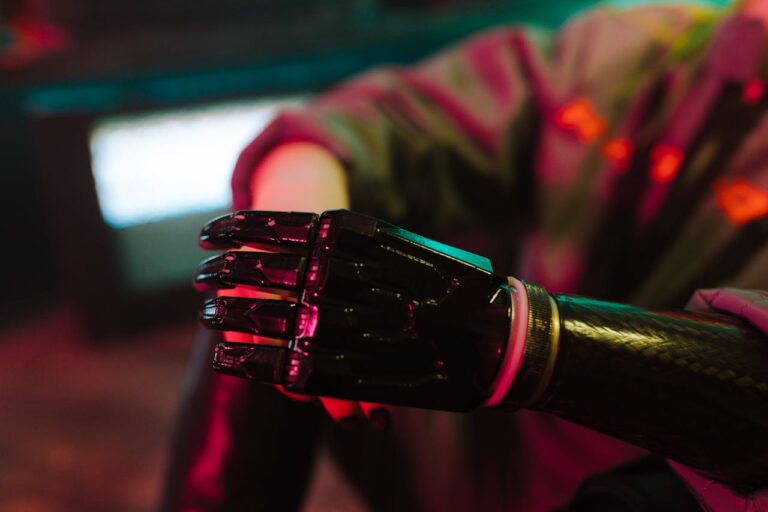US Factories Using AI Cut 30% Costs by 2025 (Proof)

Here’s the 2025 Proof of AI Slashing 30% Off US Factory Costs
Your factory is a cash bonfire.
Don’t look away. You know it’s true. Old machines groaning their way to another breakdown. Surprise downtime that torches your production schedule. A quality control process that’s basically a high-stakes guessing game.
Everyone is screaming about AI. It feels like consultant-speak for “light a million dollars on fire.”
The truth is simpler. And it’s a hell of a lot cheaper. Right now, smart US factories using AI are slashing their costs by 30% or more. This isn’t some 2030 fantasy from a Forbes article. It’s happening today.
This is the proof. Steal these ideas before your competition does.
Why Your Factory Is Secretly Bleeding Money
Before we get to the fix, let’s talk about the wound. It’s deeper than you think.
You’re obsessed with the obvious costs—materials, labor, energy. But the real killers are the ones hiding in plain sight. The ghosts in the machine. Unplanned downtime isn’t just a delay; it’s a profit-shredder that cascades through your entire operation. Scrap and rework aren’t just waste; they’re you paying to make the same product twice.
You think your maintenance schedule is working? It’s not. It’s a relic. It’s based on averages and manufacturer suggestions—not the actual health of your machines. According to IndustryWeek, you’re either servicing machines that don’t need it (wasting money) or, worse, you’re letting them run until they explode. The numbers on US manufacturing costs don’t lie—inefficiency is a plague.
This isn’t about bad management. It’s about bad data. And it’s making your factory floor a casino where the house always loses.
Predictive Maintenance Is a Money-Printing Machine
Forget the “smart factory” nonsense for a second. That term is designed to confuse you and sell you expensive software you don’t need.
Let’s talk about one thing—making your machines tell you they’re going to break before they do.
That’s predictive maintenance AI. It’s the single biggest leap you can make in operational efficiency AI. You put a few cheap sensors on your critical equipment. These sensors listen for tiny changes in vibration, temperature, or sound—data a human could never spot. An algorithm learns the machine’s healthy heartbeat. The second it detects a weird rhythm—a sign of future failure—it alerts you.
No more catastrophic breakdowns during a critical production run. Instead, you get a notification: “The bearing on CNC Mill #3 will likely fail in the next 72 hours.” You schedule maintenance during planned downtime. Problem solved. Money saved.
This isn’t rocket science. It’s just… smart. A Deloitte report on the smart factory found this approach can slash machine downtime by 50% and maintenance spending by 40%. It’s the lowest-hanging fruit for AI in manufacturing cost reduction, and if you’re not picking it, you’re committing financial malpractice. The gurus at BCG agree.
Case Study: How a Midwest Auto Parts Plant Cut Downtime by 70%
Theory is crap. Let’s talk about a real plant.
A mid-sized auto parts supplier in Ohio—we’ll call them ACME Parts—was getting murdered by one specific stamping press. It was their workhorse, but it was unpredictable. It would fail randomly twice a month, costing them $50,000 in lost output and rush repairs each time. A million-dollar headache per year.
They got pitched a massive, seven-figure industrial automation AI overhaul. They wisely told the consultants to get lost.
Instead, they found an affordable AI for factories startup. They spent $25,000 on a pilot project for that one machine. Sensors, software, and 90 days of support. Within two months, the AI flagged a gearbox anomaly that would have caused a massive failure. They fixed it overnight for a few thousand bucks.
The result after one year? Downtime on that machine dropped by 70%. The AI ROI manufacturing wasn’t just positive; it was insane. They saved over $600,000. This is the power of targeted manufacturing AI implementation, not boil-the-ocean nonsense. It’s a real-world example of what the experts at NIST and in Assembly Magazine preach.
Forget the consultants who want to rebuild your factory. Start with the one machine that’s bleeding you dry.
Your Quality Control Is a Joke — AI Makes It 90% Better
Let’s be brutally honest. Your quality control team is heroic, but they’re human.
Human eyes get tired. They get strained. They miss things. That’s not an insult; it’s a biological fact. And that fact is costing you a fortune in defects, rework, and—worst of all—escapes to the customer.
Now, picture this: a high-res camera mounted over your production line. It’s connected to a brain that never gets bored, never gets tired, and can see flaws invisible to the naked eye. That’s AI quality control. It uses machine vision to inspect every single product in real-time. It spots micro-fractures, color deviations, and misaligned components with terrifying accuracy.
Alot of people think this means firing your QC team. Wrong. It means turning them into superheroes. Instead of staring at parts for eight hours, they manage the AI system and focus on complex, high-level problem-solving. It’s a core principle of lean manufacturing AI.
The data is just staggering. A landmark McKinsey study found AI-powered inspections can boost defect detection by up to 90%. Think about what that does to your scrap rate. Your warranty claims. Your reputation. It’s one of the clearest ways to reduce manufacturing costs and it leverages technology from leaders like IBM.
Stop Guessing: AI for Supply Chain and Production Optimization
Why are you still running your production schedule off a spreadsheet from 2003?
You are shooting yourself in the foot. Your supply chain is a jumbled jumble of variables- supplier delays, shipping volatility and sudden demand spikes. A static spreadsheet can’t handle that. It’s like trying to navigate a hurricane with a paper map.
This is where AI for supply chain comes in. It’s not about the future of manufacturing AI; it’s about tools you can use today from companies like Oracle and insights from analysts at Gartner. All that turmoil, the lead times of the suppliers, the logistics information, the weather forecasts, the real time sales information all gets fed into these systems to come out the other end as a dynamic production plan.
The AI explains what to construct, when to construct and how much to construct. It is cost-optimized, velocity-optimized and resilience-optimized. It is one of the main elements of creating a real AI-based factory.
For the ambitious, there’s digital twin technology. You create a virtual replica of your entire factory. You can simulate changes—”what happens if we add a new line?” or “what’s the impact of a supplier shutting down for a week?”—without risking a single dime in the real world. As The Manufacturer explains, it’s the ultimate sandbox for manufacturing data analytics.
The “But What About the People?” Argument Is Lazy
Now that we have gotten the elephant out of the room, perhaps we can work on the elephant in the room. Are the robots taking our jobs?
Wrong. That argument is lazy, and frankly, it’s an insult to your team.
The AI impact on labor isn’t about replacement; it’s about elevation. AI is coming for the jobs that suck. The repetitive, mind-numbing, soul-crushing tasks that lead to burnout and human error. The machine vision system replaces the eye-straining inspection work. The predictive maintenance algorithm replaces the grunt work of routine check-ups.
This frees up your most valuable asset—your people—to do what humans do best: solve complex problems, innovate, and manage the systems. A Brookings Institution report confirms this isn’t about fewer jobs, but different jobs. Better jobs.
People screaming about job losses are missing the point entirely. The jobs are changing. The real threat to your workforce isn’t AI. It’s your competitor across town who uses advanced manufacturing technology to become twice as efficient while you’re stuck in the past. That’s what kills jobs. Improving US manufacturing competitiveness, as the Wall Street Journal notes, depends on this evolution. The World Economic Forum agrees.
Your Step-by-Step Escape Plan from High Costs
Enough talk. Here’s a dead-simple, 3-step plan to start cutting costs with AI this quarter. Not next year. This quarter.
#1. Identify the Bleeding.
Forget what the consultants at PwC or SAP might tell you in a 100-page report. Get your team in a room. Look at your data. What is the single biggest source of financial pain? Is it downtime on one machine? Is it the scrap rate on one specific product? Find the #1 killer. Be ruthless. Use data, not feelings.
#2. Pilot a Small, Cheap Project.
Once you’ve identified the enemy, find a vendor that offers an affordable AI for factories solution for that specific problem. Don’t sign a goddamn annual contract. Do a 90-day pilot. The goal isn’t to transform your business; it’s to prove the concept and calculate the AI ROI manufacturing. As experts from MIT Sloan will tell you, successful manufacturing AI implementation starts small.
#3. Scale or Kill.
After 90 days, look at the numbers. Did the pilot project save you more money than it cost? Yes? Great. Now expand it. Roll it out to other machines or lines. No? Then kill it. Kill it without mercy and test something else. That’s it. No big committee. No endless analysis. Just action.
Final Words: Stop Reading and Start Doing
Running a factory the old way is a death sentence. You’re being nibbled to death by inefficiency.
Targeted AI isn’t an expense. It’s a weapon. It’s the tool that will decide who wins and who dies in the next decade of American manufacturing. It’s the core of US manufacturing competitiveness.
Your competitors are already doing this. They’re not smarter than you. They just started.
So stop reading articles. Stop waiting for the perfect moment. Pick one problem this week. Find one AI tool to solve it. The automation experts at A3 know this is the way.
Go. Do it now.
FAQs
How many American companies use AI?
More than you think. 1 in 3 U.S. companies already use AI like it’s their secret drug. The others? They’re in panic mode—trying to catch up before they’re buried alive by irrelevance.
Which company uses AI in manufacturing?
Tesla isn’t a car company. It’s an AI lab disguised as one. Their factories don’t just build—they think. Machines make decisions faster than any overworked manager ever could.
What are the top 10 AI companies in the U.S.?
Here’s the killer lineup: OpenAI (obviously), Nvidia (they’re printing money), Google, Amazon, Microsoft, IBM, Meta, Palantir, Intel, Salesforce. They don’t just use AI. They are AI. Every product they touch is a Trojan horse for data.
How is AI being used in factories?
It’s wild. Machines now predict their own death before it happens. AI spots a defect before a human blinks. Boring jobs? Gone. Efficiency? Sky-high. Welcome to the no-lunch-break era.
What industries use AI the most?
Tech is the poster child. But finance is betting billions. Healthcare? Saving lives in silence. Manufacturing is quietly becoming a robot party, and humans are barely invited.






